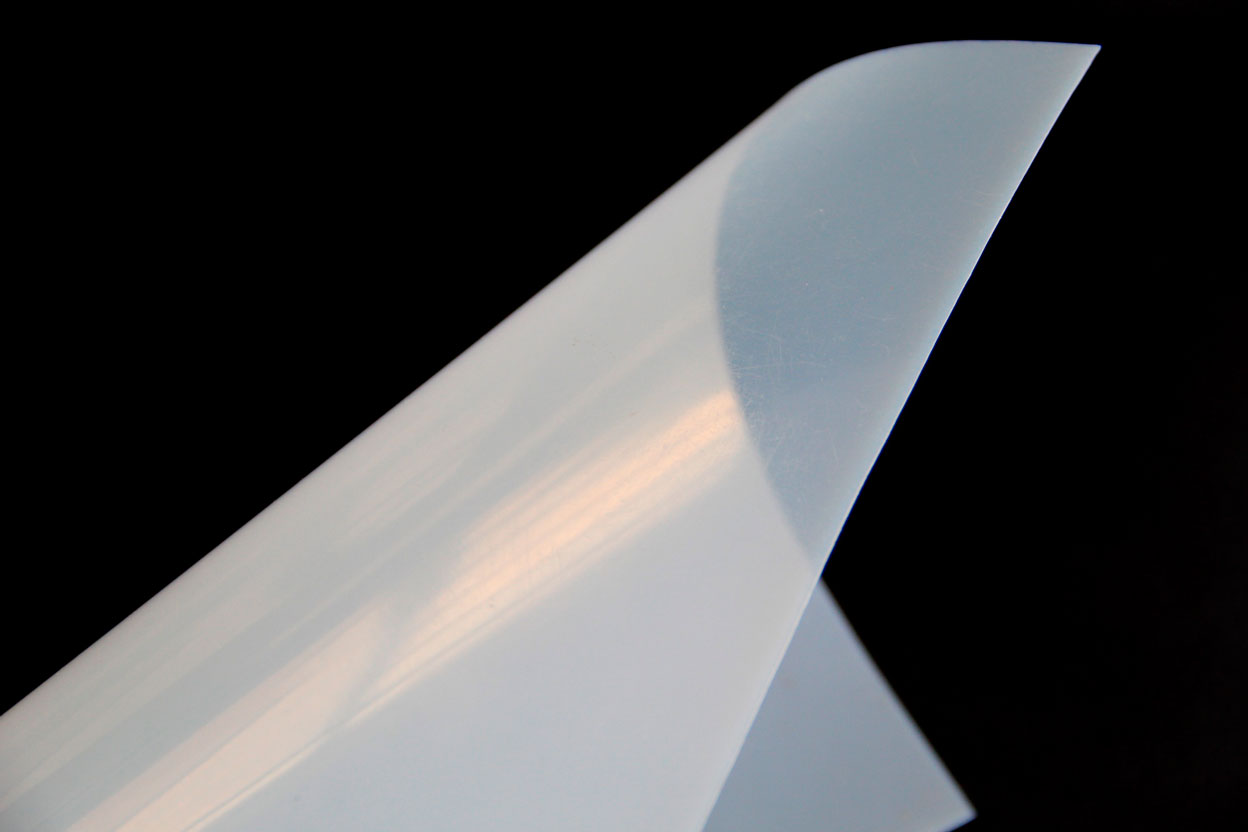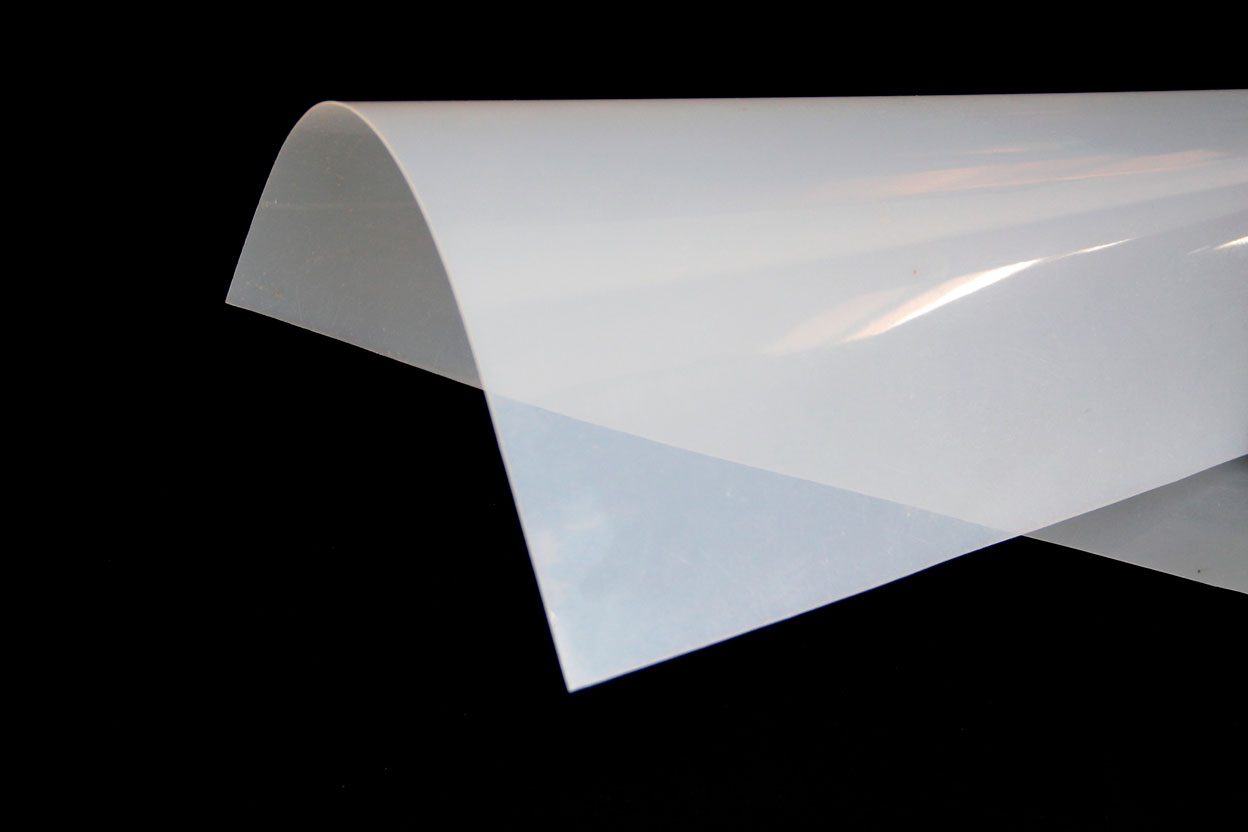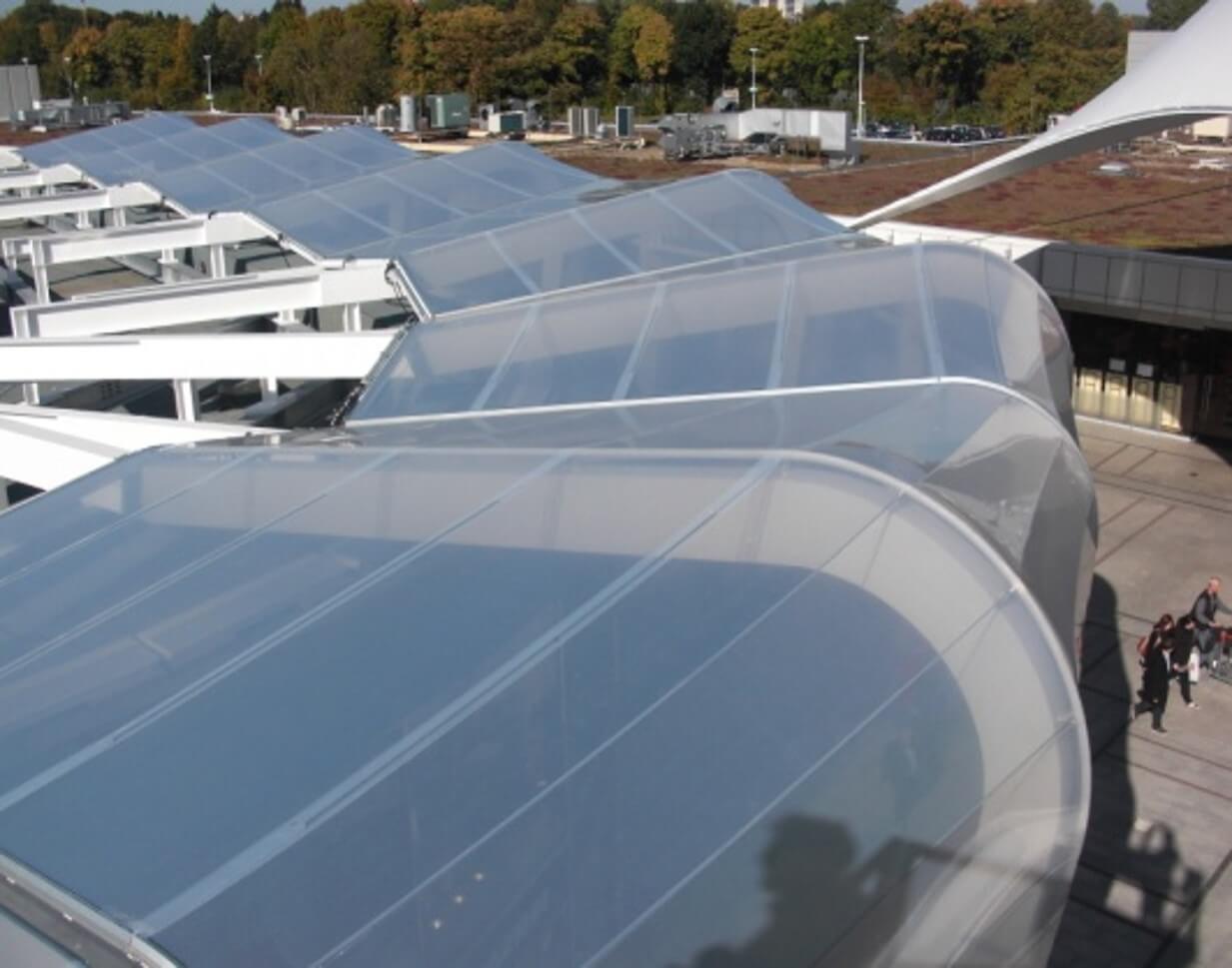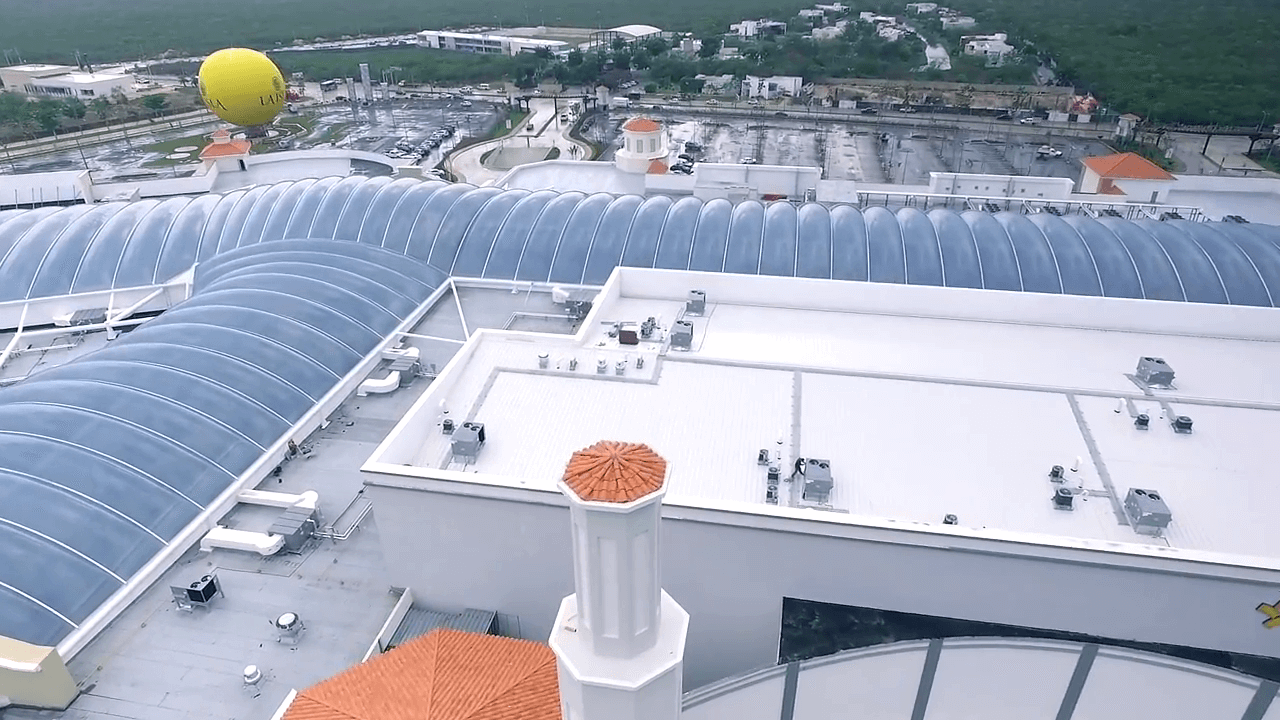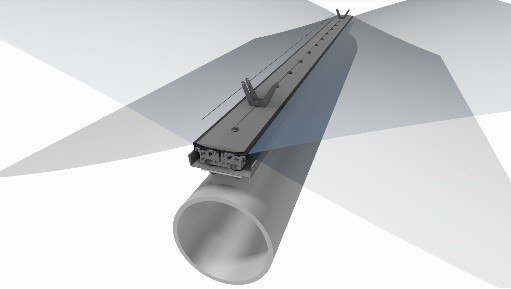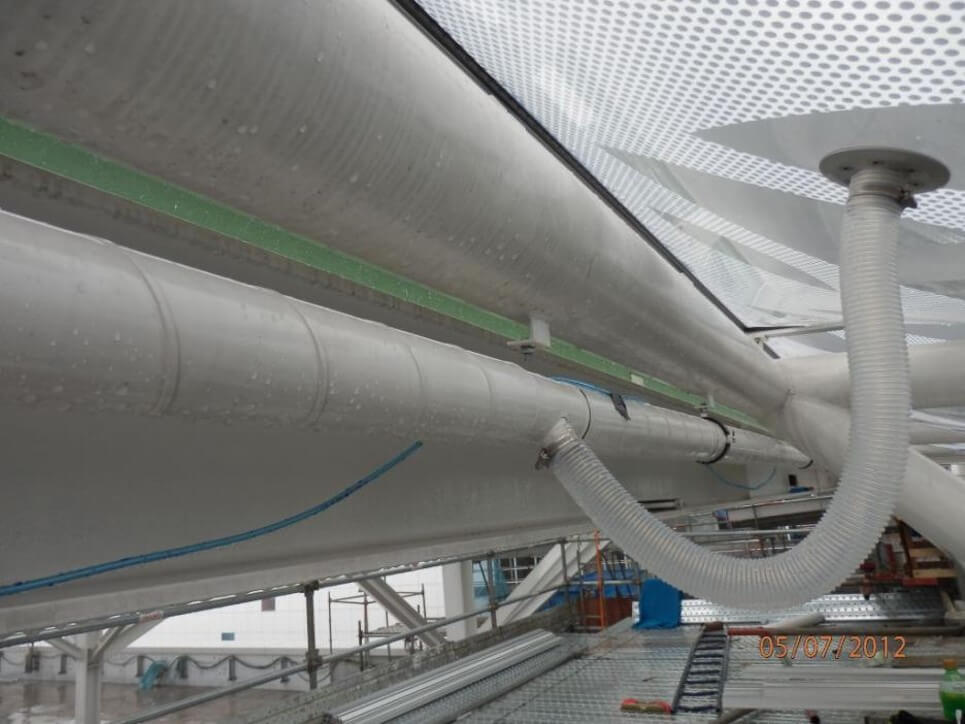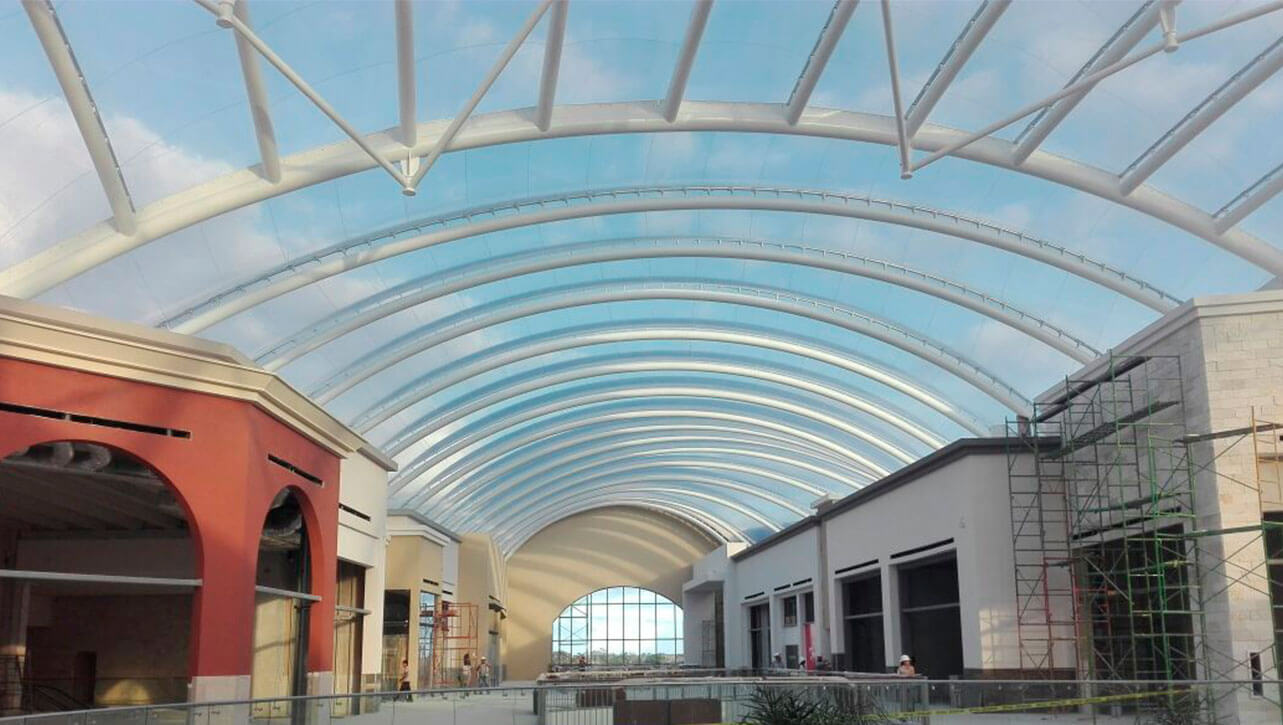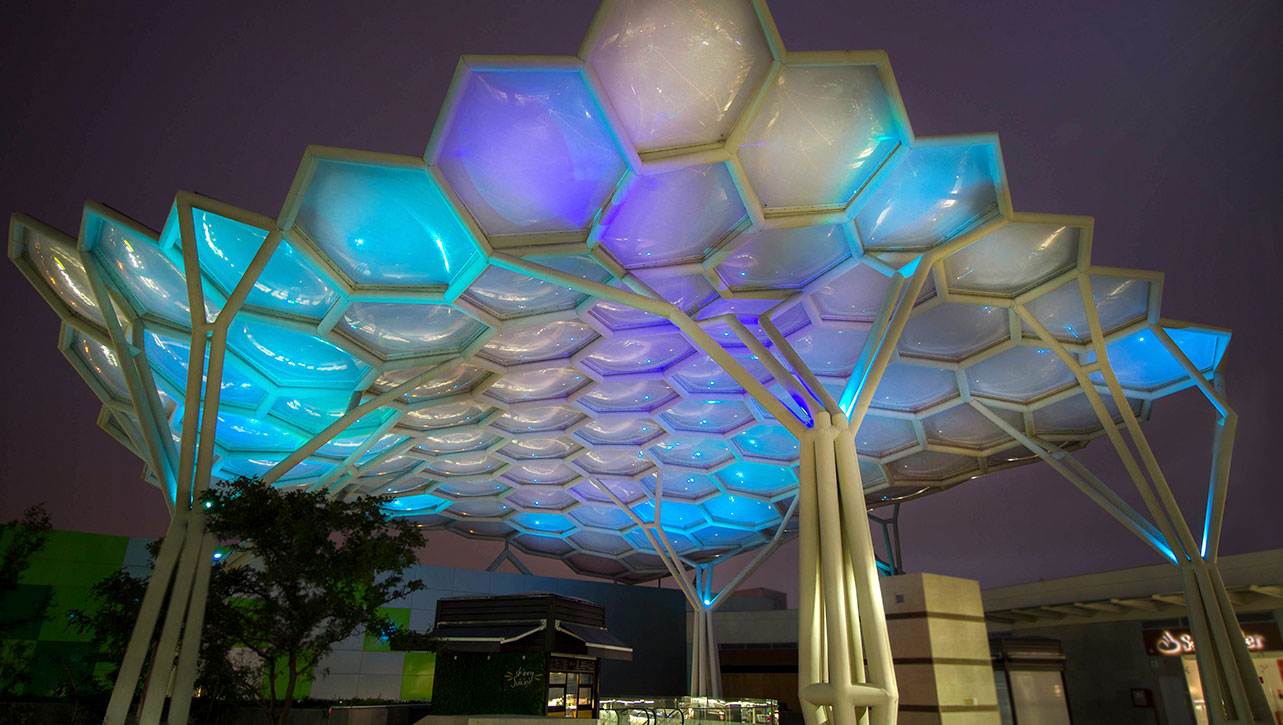ETFE FILM
ETFE FILM
ETFE (Ethylene Tetrafluoroethylene) film is extremely durable, totally transparent, fully color printable, and considerably lighter in weight than glass structures. ETFE is rapidly establishing itself as the overall best value option for skylight applications, large-scale natural light green housing, transparent long-span structures, and architectural building facades.
ETFE CONSTRUCTION TECHNOLOGY
BENEFITS OF ETFE FILM STRUCTURES
Exceptional Light Transmission
ETFE films can be highly transparent (from 90% to 95%) and allow for the passing of UVs which are responsible for the promotion of photosynthesis thus facilitating plant growth.
Solar Control/Shading
ETFE film systems can incorporate several frit patterns on one or multiple layers to alter their solar performance. The foil is printed with various standard or custom patterns. Colors can be introduced in a variety of ways whether it's applied during the film extrusion process providing a consistent tint in various tones from red to violet or adding lighting with unlimited color options.
Elasticity
While ETFE films are very elastic (up to 600% at breaking point), they are still structurally resistant. The tensile strength at the limit of elasticity/plasticity is 21-23 N/mm² but tensile strength to breaking point is 52/Nmm². For structural calculation a limit of 15 N/mm² is conservatively usually taken.
Long Lasting/Longevity
Under exposure to environmental pollution, UV light, harsh chemicals or extreme temperature variations, ETFE does not degrade.
Acoustics
ETFE film has approximately 70% acoustic transmission
Sustainable/Energy Efficient
From extruding of the film to transportation to site, compared to other similar cladding material, little energy will be consumed thus reducing the overall carbon footprint. In addition to this, the nature of the product enhances the building physics through insulation and daylighting, therefore contributing to the global low energy aspect of the building.
Cost Effective
Due to the lightweight nature of ETFE, substructure support systems and concrete foundations can be designed more efficiently. ETFE systems also provide ample natural daylighting, thus minimizing energy costs by lowering the demand for indoor lighting.
Recyclable
Easily recyclable, waste from the manufacturing process or even old ETFE elements can be remolded into new ETFE products such as tubing components, wires or castings.
Thermal Performance
Comparable to a glass system, the increased thermal performance is possible with a multi-layered system. For a double or triple layer pneumatic system, multiple layers of film are welded into panels that are inflated with low pressurized air to stabilize the film and providing the thermal property of the system.
In a single layered application, you can achieve about an R-Value of 1 and in a two- layer system, approximately an R-Value of 2.0. Whereas, a three- layer ETFE system has an R-Value of around 2.9 degrees F h / Btu or a U-Value around .35 BTU/(h degrees F ft 2).
Air Inflation System / Energy Consumption
A pneumatic ETFE cushion system is generally supplied by one or more inflation units. Each unit consists of two (2) redundant blowers forming a backup system for guaranteed structural stability. The air when entering the machine will be dried to avoid condensation within the cushions. A series of pressure sensor will continuously monitor the internal pressure of the ETFE cushions maintaining them between 5 PSF and 6 PSF. In case of high wind or snow loads, if necessary and designed, sensors can automatically and continuously adapt the pressure to compensate external loading up to 30 PSF.
Depending on air temperature and humidity, one unit can supply a roof of up to 15,000 square feet. These units are UL certified and run on an 110V power with power consumption less than 1kW/h.
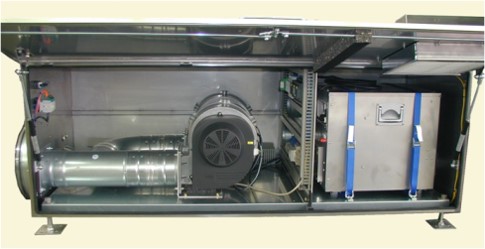
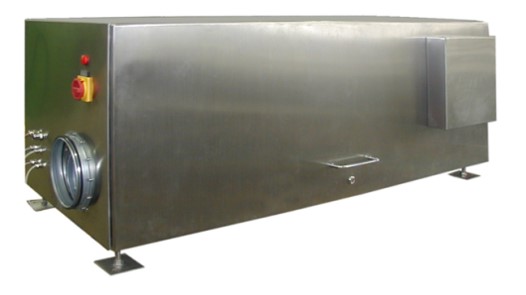
Photovoltaic and LED Integration
Flexible photovoltaic (PV) cells and/or LED lighting can be integrated with either a single layered or cushioned system to meet performance and/or aesthetic requirements.
Maintenance / Cleaning
Due to the non-adhesive surface properties of the ETFE, deposits of dirt, dust, and debris do not stick and are washed away by the rain resulting in a “self-cleaning” effect. However, as for all mechanical equipment and their components, it is necessary to perform a yearly inspection. The inspection includes all necessary checks on the air inflation units and filter replacements. The ETFE film and its attachments will also be inspected for possible damages to prevent any further issues.
Fire Properties
ETFE Films have been rates under different national and international standards as self-extinguishing with no burning drops. The film melts away at around 500 degrees F. They are classified under several world standards as ASTM E84 class A, ASTM E108 class A, UL 94VTM class 0, EN 13501-1 class B-s1-d0, NFPA 701.
Safety
Due to the high resistance and elasticity of the ETFE, it is an ideal building component where sudden extreme loads such as earthquakes or blast may occur. Unlike glass that will shatter and cause major concern under similar shock load situations, ETFE will either deflect under load or even in case of breakage, is unlikely to cause any major damages. ETFE is, however, not suitable as vertical railing and cannot prevent from intrusion.

Get to know our projects
Visit our Portfolio to view our completed ETFE Film projects by Span Flex.

